
How to Use MQ-135 SENSOR AIR QUALITY: Examples, Pinouts, and Specs
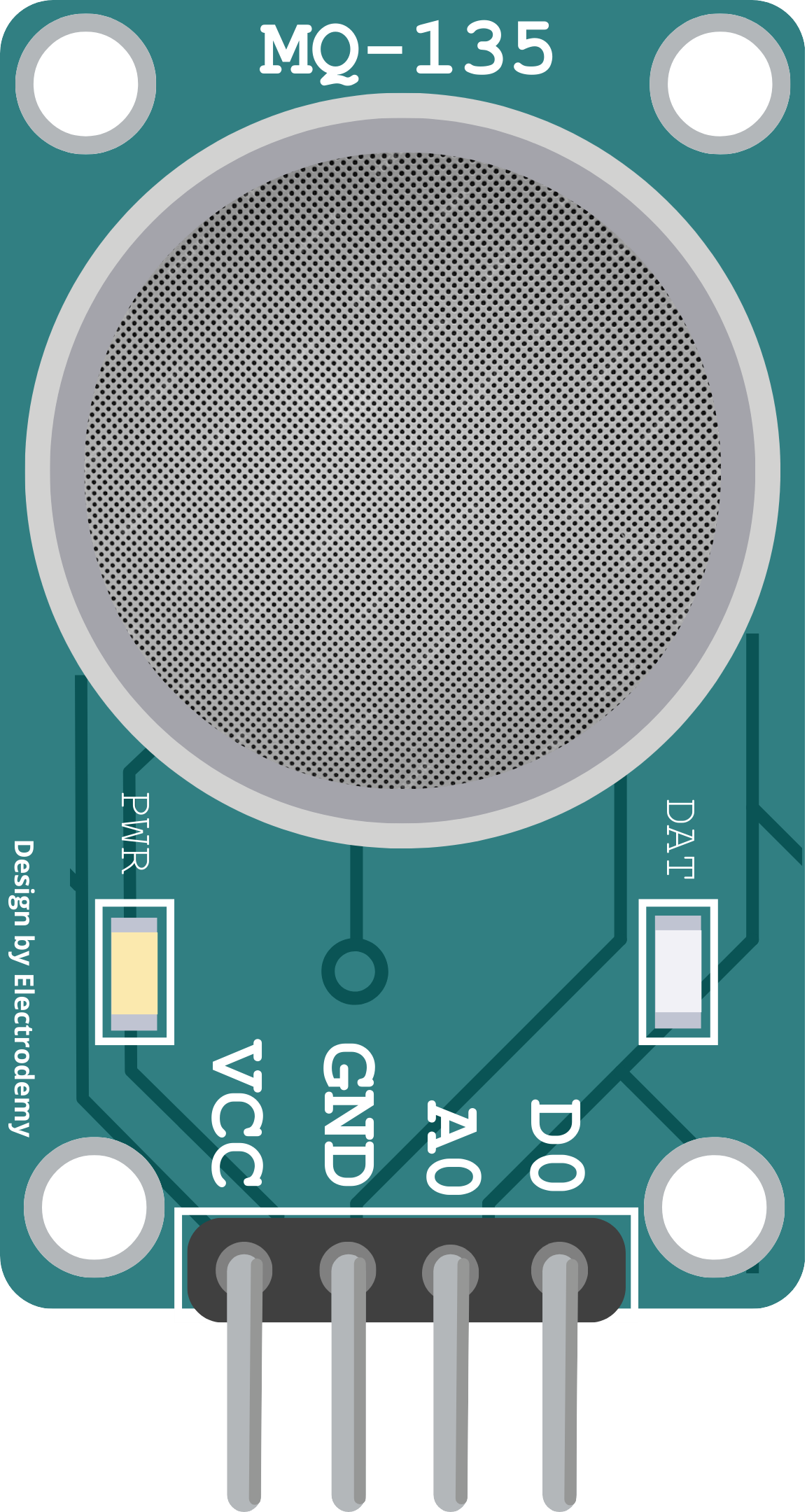
 Design with MQ-135 SENSOR AIR QUALITY in Cirkit Designer
Design with MQ-135 SENSOR AIR QUALITY in Cirkit DesignerIntroduction
The MQ-135 Sensor for Air Quality is a versatile and sensitive gas sensor designed to identify and quantify various harmful gases, including ammonia, nitrogen oxides, benzene, smoke, and others. It is widely used in air quality monitoring devices for both indoor and outdoor environments, providing valuable data for air quality assessment and control systems.
Explore Projects Built with MQ-135 SENSOR AIR QUALITY
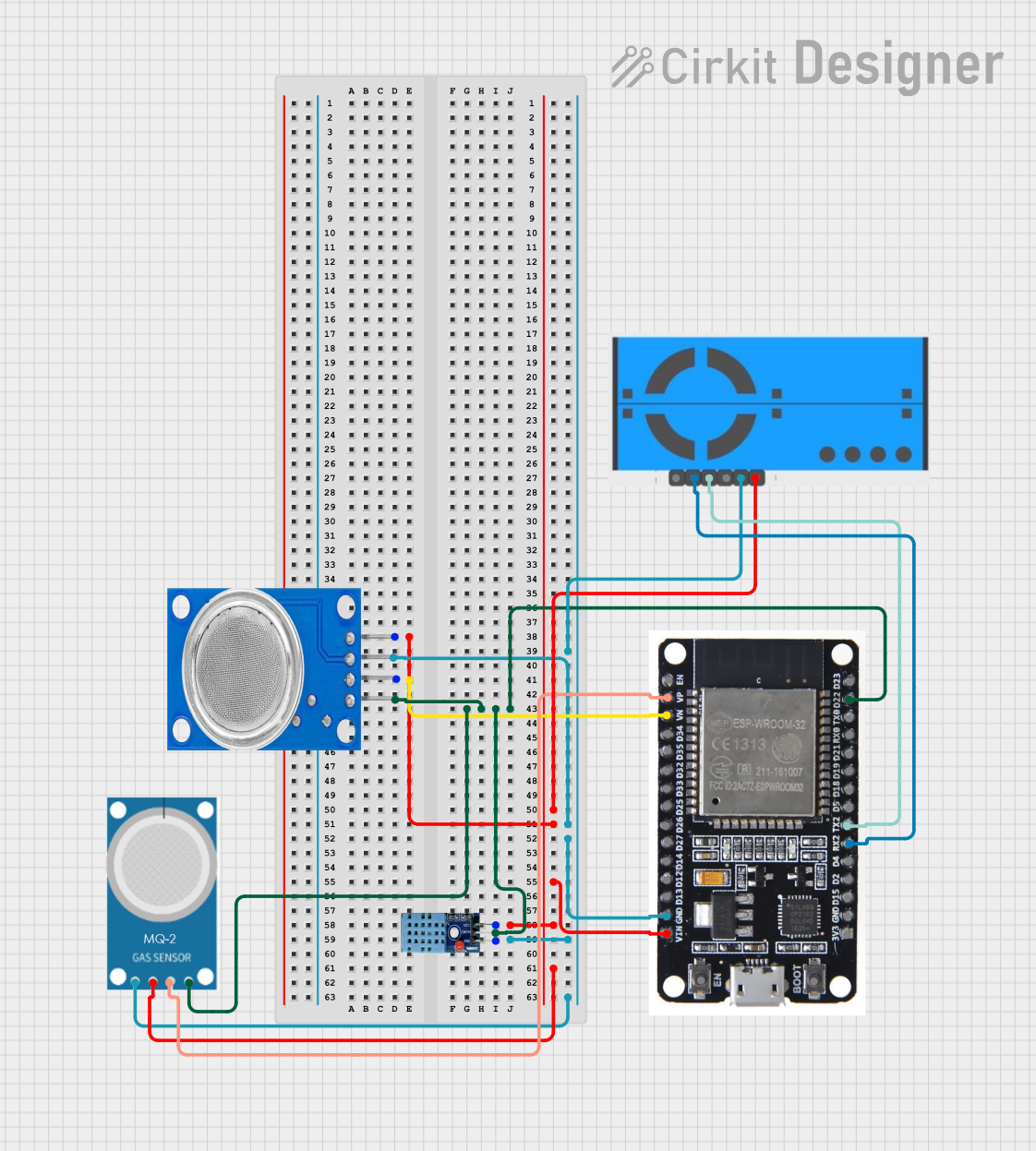
 Open Project in Cirkit Designer
Open Project in Cirkit Designer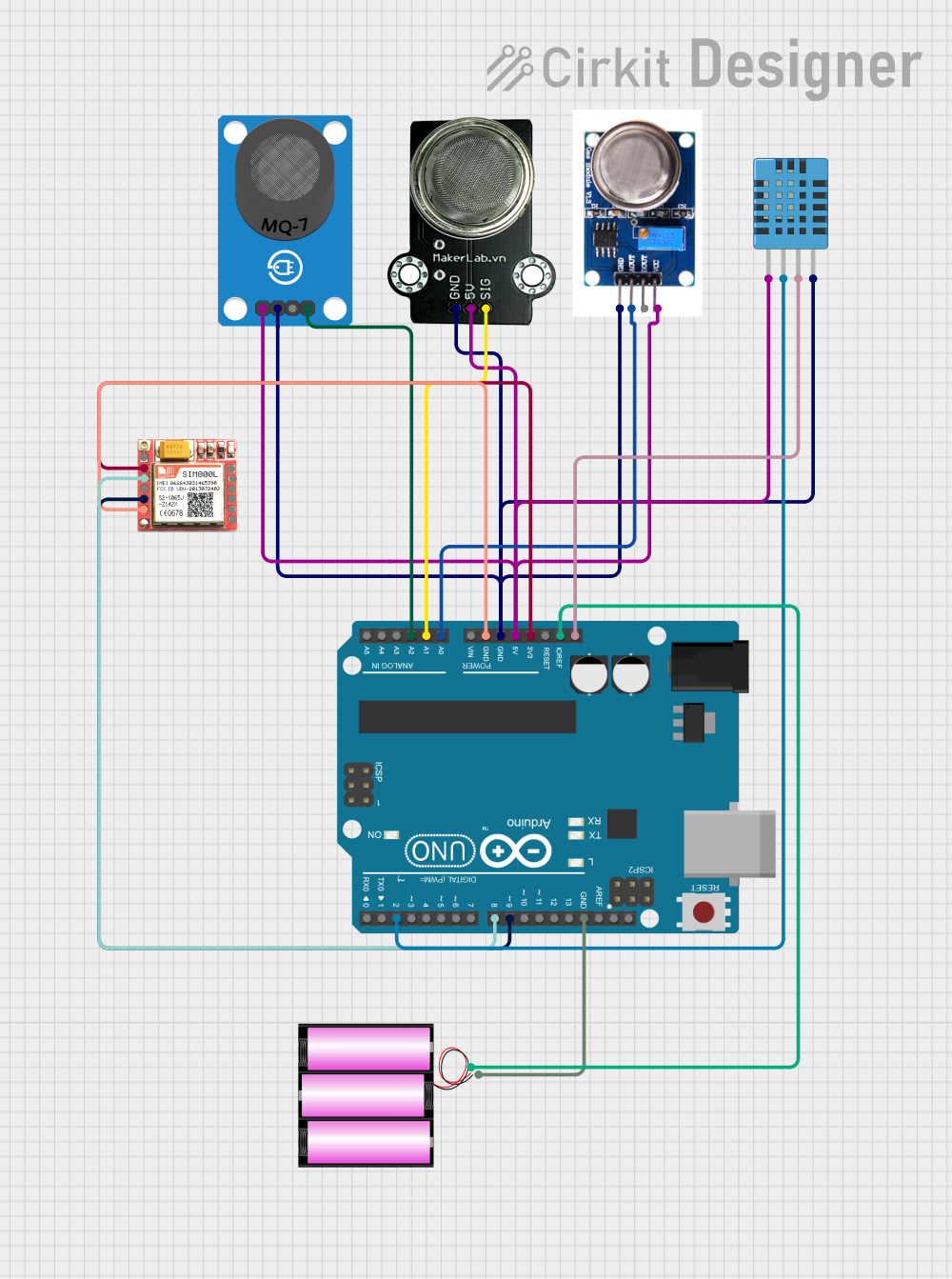
 Open Project in Cirkit Designer
Open Project in Cirkit Designer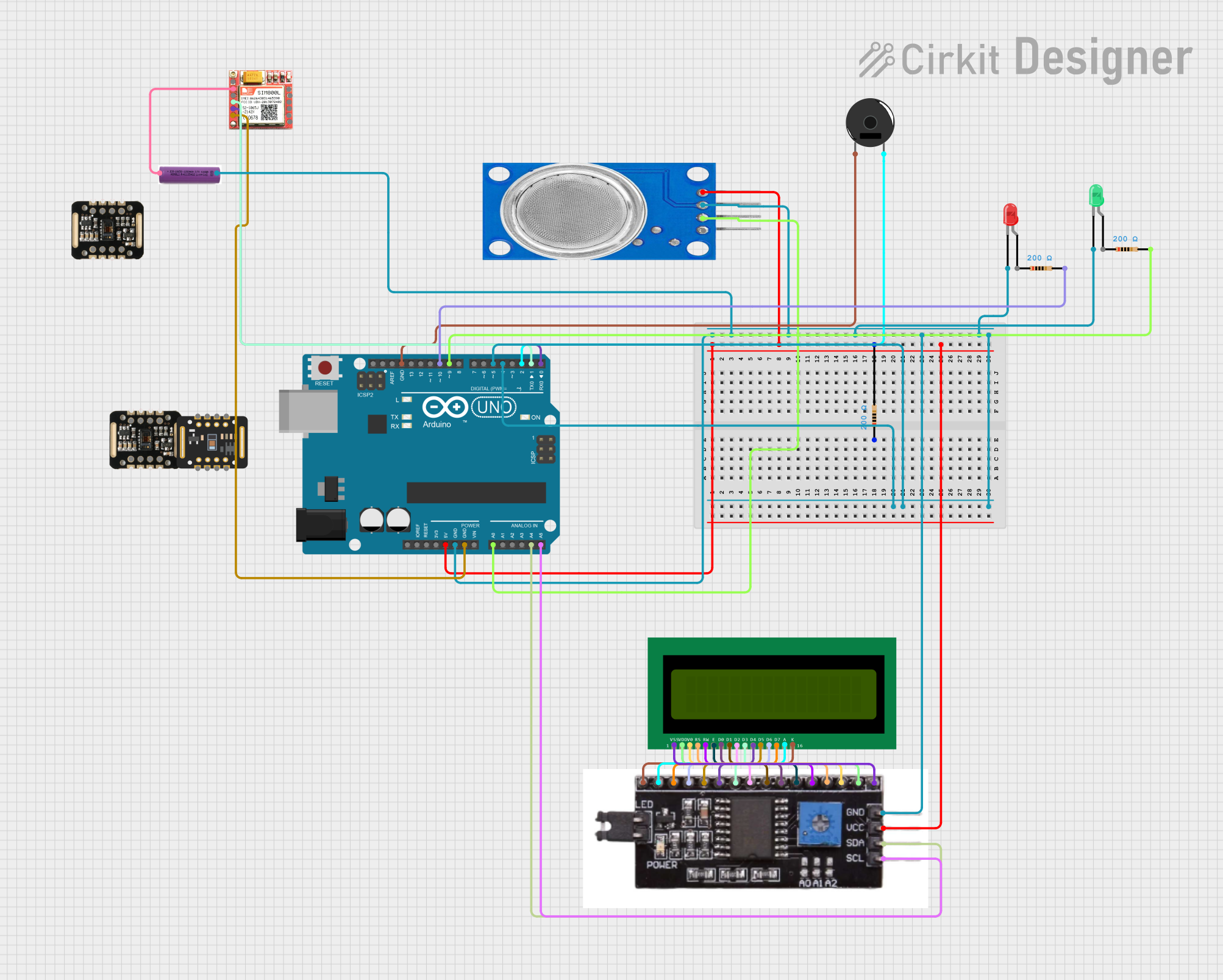
 Open Project in Cirkit Designer
Open Project in Cirkit Designer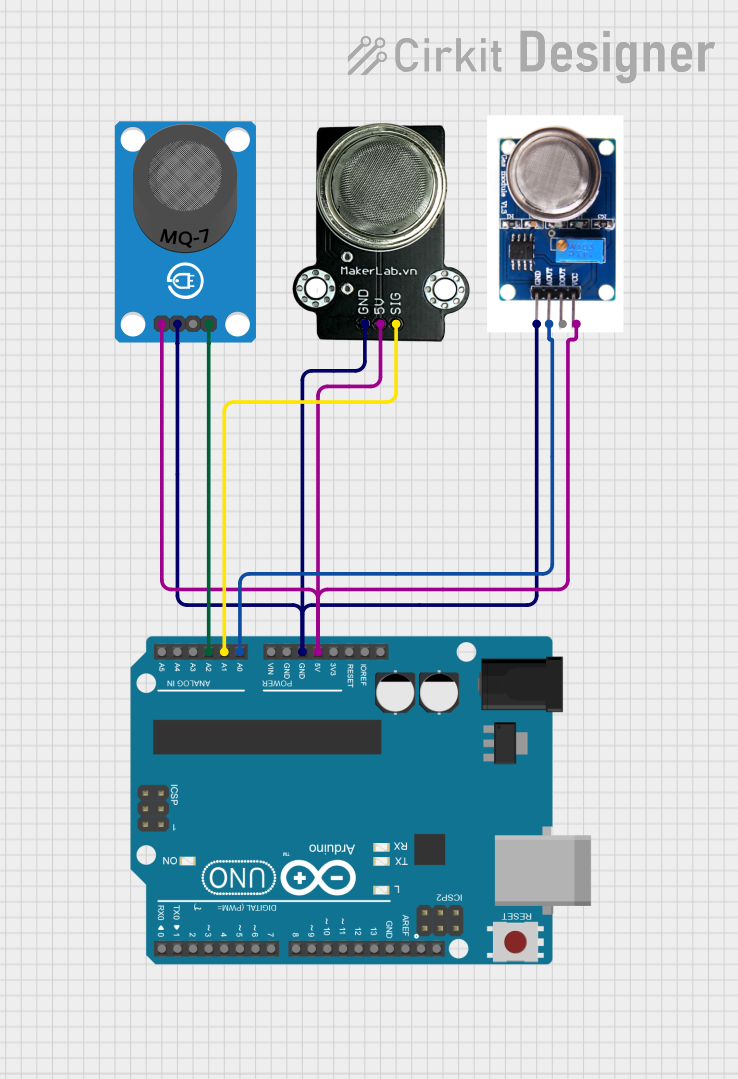
 Open Project in Cirkit Designer
Open Project in Cirkit DesignerExplore Projects Built with MQ-135 SENSOR AIR QUALITY

 Open Project in Cirkit Designer
Open Project in Cirkit Designer
 Open Project in Cirkit Designer
Open Project in Cirkit Designer
 Open Project in Cirkit Designer
Open Project in Cirkit Designer
 Open Project in Cirkit Designer
Open Project in Cirkit DesignerCommon Applications and Use Cases
- Indoor air quality monitoring
- Environmental monitoring
- HVAC systems (Heating, Ventilation, and Air Conditioning)
- Air purifiers and smart home devices
- Industrial air quality control
- Detection of harmful gases in workplaces
Technical Specifications
Key Technical Details
- Sensor Type: Gas Sensor
- Detection Gas: Ammonia, Nitrogen oxides, Benzene, Smoke, and other harmful gases
- Concentration Range: 10 to 1000 ppm (parts per million) for various gases
- Supply Voltage: 5V ± 0.1
- Preheat Duration: 20 seconds
- Load Resistance: Adjustable
- Operating Temperature: -20°C to 50°C
Pin Configuration and Descriptions
| Pin Number | Name | Description |
|---|---|---|
| 1 | VCC | Supply voltage (5V) |
| 2 | GND | Ground |
| 3 | DO | Digital output (TTL) |
| 4 | AO | Analog output |
Usage Instructions
How to Use the Component in a Circuit
- Powering the Sensor: Connect the VCC pin to a 5V supply and the GND pin to the ground.
- Reading the Output:
- Analog Output (AO): Connect to an analog input on your microcontroller to get a variable voltage that corresponds to the concentration of gases.
- Digital Output (DO): Can be connected to a digital input on your microcontroller; it goes high when the gas concentration exceeds a predefined threshold.
- Adjusting Sensitivity: The onboard potentiometer can be used to adjust the sensitivity and set the threshold for the digital output.
Important Considerations and Best Practices
- Calibration: The sensor requires calibration to ensure accurate readings. Expose the sensor to clean air and adjust the onboard potentiometer until the digital output switches off.
- Warm-Up Time: Allow the sensor to preheat for at least 20 seconds to stabilize its readings.
- Environmental Factors: Be aware that humidity and temperature can affect the sensor's readings.
- Avoid Contaminants: Protect the sensor from exposure to organic solvents, oils, and high concentration gases to prevent sensor poisoning.
Example Code for Arduino UNO
// MQ-135 Sensor Example Code
int analogPin = A0; // Analog input pin for MQ-135
int sensorValue = 0; // Variable to store the sensor value
void setup() {
Serial.begin(9600); // Initialize serial communication at 9600 baud rate
}
void loop() {
sensorValue = analogRead(analogPin); // Read the analog value from sensor
Serial.print("Air Quality: ");
Serial.println(sensorValue); // Print the sensor value to the serial monitor
delay(1000); // Wait for 1 second before reading again
}
Troubleshooting and FAQs
Common Issues Users Might Face
- Inconsistent Readings: If the sensor provides inconsistent readings, ensure that it has been properly calibrated and that there is no interference from other chemicals or temperature fluctuations.
- No Output: Check the power supply and connections if there is no output from the sensor. Ensure that the sensor has been given sufficient time to warm up.
Solutions and Tips for Troubleshooting
- Calibration: Regularly recalibrate the sensor, especially when the environmental conditions change.
- Power Supply: Ensure that the sensor is powered with a stable 5V supply.
- Sensor Placement: Place the sensor in an area with good air circulation and away from direct sunlight or heat sources.
FAQs
Q: How often should the MQ-135 sensor be calibrated? A: It is recommended to calibrate the sensor upon first use and periodically when there are significant changes in the environment or every few months.
Q: Can the MQ-135 sensor detect carbon monoxide? A: The MQ-135 is not specifically designed for carbon monoxide detection. For accurate CO measurements, a dedicated CO sensor is recommended.
Q: Is the MQ-135 sensor suitable for outdoor use? A: While the MQ-135 can be used outdoors, it should be protected from water and extreme weather conditions to ensure accurate readings and longevity.